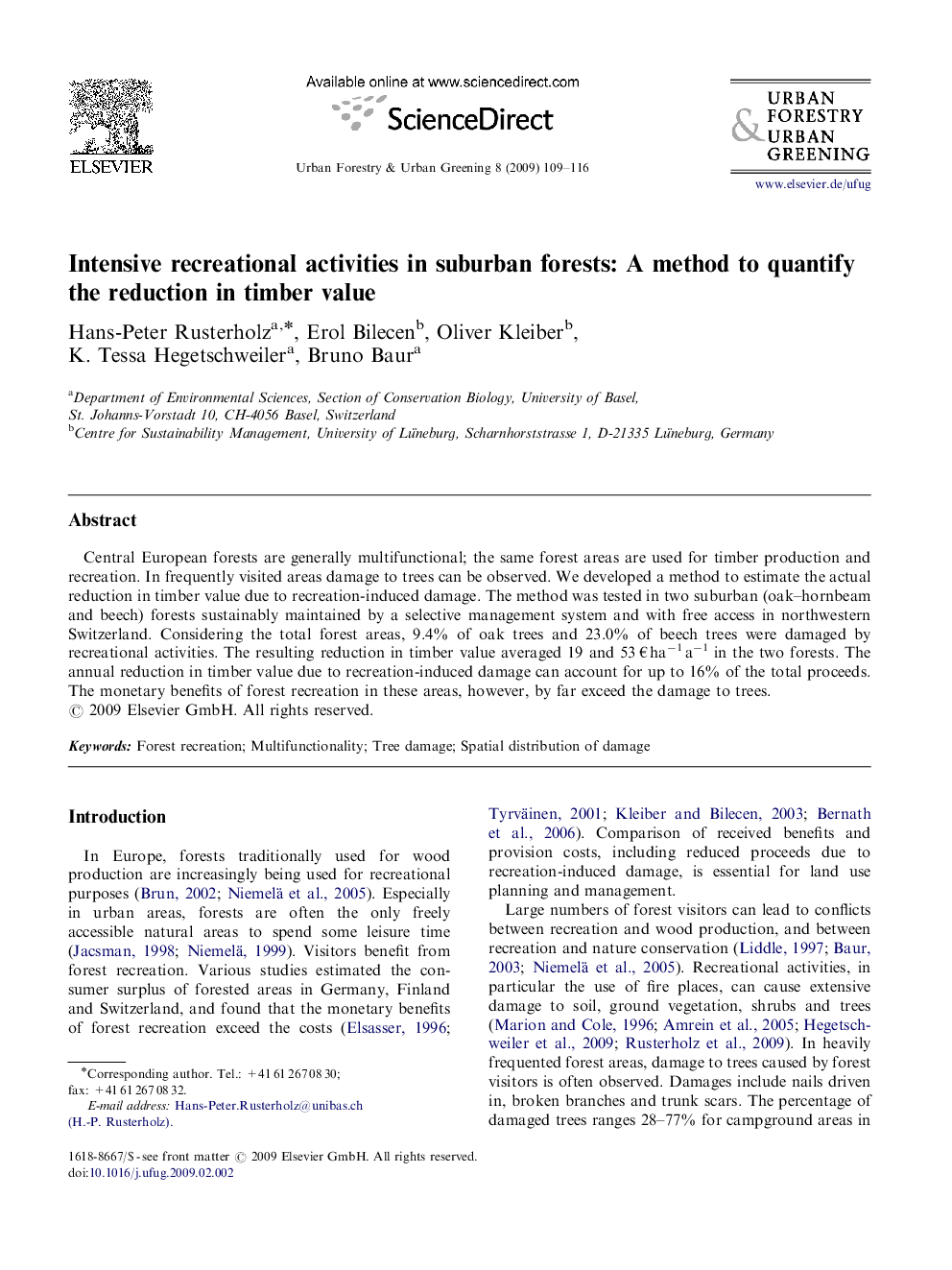| Article ID | Journal | Published Year | Pages | File Type |
|---|---|---|---|---|
| 94179 | Urban Forestry & Urban Greening | 2009 | 8 Pages |
Central European forests are generally multifunctional; the same forest areas are used for timber production and recreation. In frequently visited areas damage to trees can be observed. We developed a method to estimate the actual reduction in timber value due to recreation-induced damage. The method was tested in two suburban (oak–hornbeam and beech) forests sustainably maintained by a selective management system and with free access in northwestern Switzerland. Considering the total forest areas, 9.4% of oak trees and 23.0% of beech trees were damaged by recreational activities. The resulting reduction in timber value averaged 19 and 53 € ha−1 a−1 in the two forests. The annual reduction in timber value due to recreation-induced damage can account for up to 16% of the total proceeds. The monetary benefits of forest recreation in these areas, however, by far exceed the damage to trees.
